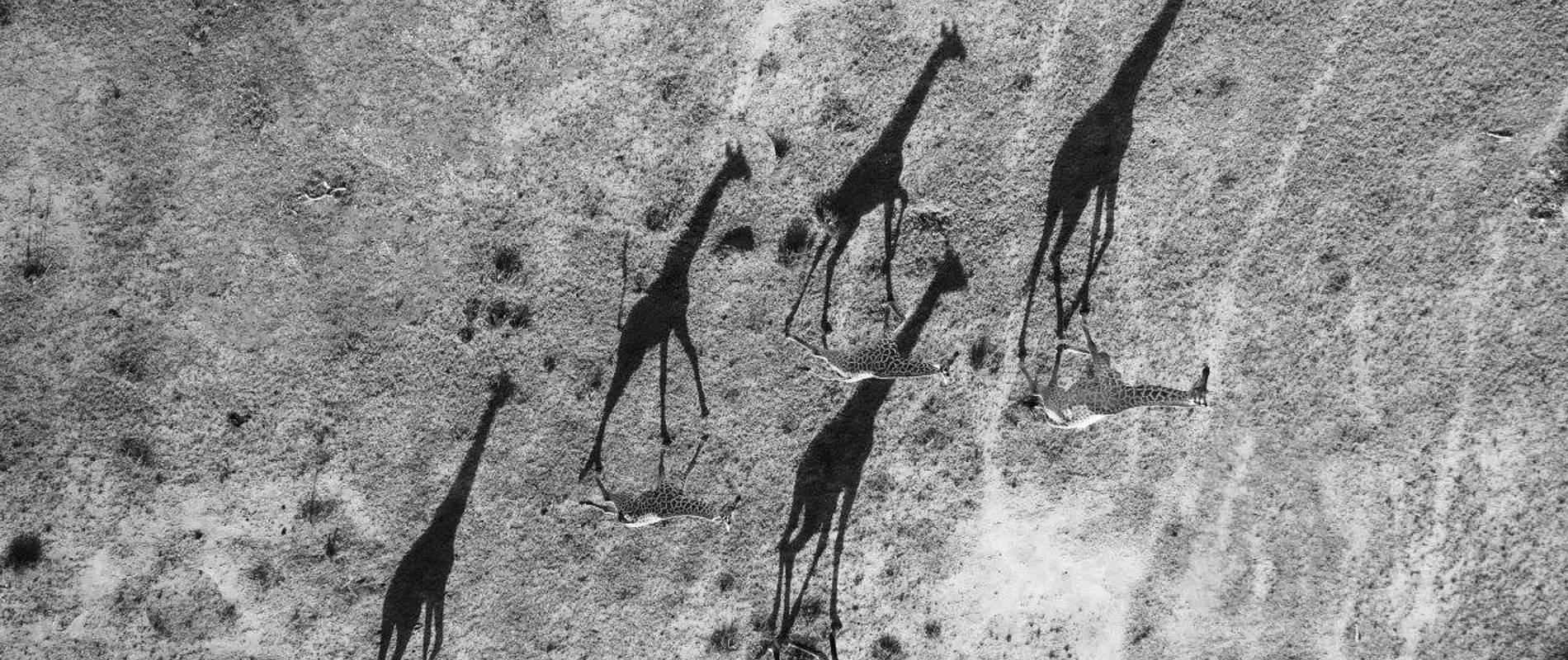The general lull in illegal activity in December was short-lived as things began to heat up again in January. There was a significant increase in sightings of elephant carcasses, with a total of 10 carcasses found in January. In every case the ivory was found intact, and it is assumed that the elephants died of natural causes (most likely drought related).
There were a number of poaching incidents discovered during the month, and a total of three poachers’ harbours were found, but none of these were fresh. A highlight for the month was the sighting and subsequent arrest of a suspected poacher escaping Galana Ranch on a motorbike. In this instance, the suspect was apprehended in the possession of 24 dik-diks (small antelope), 2 bustards (bird), 1 gerenuk (antelope), 1 African hare, and the motorbike used to transport himself and the carcasses.
Three veterinary cases were assisted by the Aerial Unit in January. One case, an elephant with a snare on Rukinga Ranch, was attended to by two aircraft – one fixed-wing to collect the KWS Vet from Kimana Sanctuary where he was attending to another case, and a helicopter from which the elephant could be darted so that the snare could be successfully removed. On the same day, the helicopter and vet also flew to Kulalu Ranch to attend to a young giraffe that had been spotted earlier by an SWT ground team and confirmed by another SWT fixed-wing pilot. Unfortunately, by the time the helicopter arrived, the young giraffe had disappeared and despite a thorough search, could not be relocated. The third case was that of a bull elephant found with an injured right leg, in the Dakota area of Galana. With no local vets available at the time, a KWS vet was flown down on a chartered flight from Nairobi as part of the SWT/KWS Sky Vets program to treat the injury.

In addition to intervening in the treatment of wildlife, two medevacs were completed in January. These were of a Tsavo Trust ranger who had been critically injured by a charging buffalo while on patrol, and a young child from Kone on the East side of the Park who had suffered a snake bite. Both were flown to medical facilities for care and in the case of the ranger, it is very possible that his life was saved as a result of the quick response.
One orphaned elephant rescue was completed in January, a 4-month-old elephant calf was found alone and severely dehydrated on Mgeno ranch to the south of Tsavo. The calf was airlifted by helicopter to our Kaluku Neonate Nursery for further care.

A slightly different elephant rescue story unfolded to the north of Tsavo East National Park, near Kone, where a large bull elephant was reported to be stuck in a well. A helicopter was immediately dispatched to try and find the bull based on the report received from the community and, if located, to assist in getting the elephant out. On being found, ground teams were sent to the area, who worked well into the evening to try and pull the elephant out of the muddy quagmire that he'd found himself trapped in. Eventually they were forced to give up for the day. The next morning, a fixed-wing pilot flew a backhoe operator up to Ithumba, while the SWT backhoe had been transported overnight to the elephant’s location nearly 100 km away from its base. A gargantuan effort, involving the creation of a ramp out of the well, and the scooping of the bull up and out of the mud, was rewarded when he finally stood up and walked to freedom after more than 24 hours of being stuck. Read the full story.
Other illegal activities observed in January were logging and charcoal activities in Tsavo East, Chyulu Hills National Park (CHNP) and on Galana and Kulalu Ranches. Also noted in Chyulu Hills were 3 marijuana plots which were all destroyed.

Livestock remains mostly under control in Tsavo East, and frequent aerial patrols and helicopter assistance, as well as a huge operation by KWS, succeeded in removing the majority of livestock from the southern sector of Tsavo West National Park, for the first time in many years – a huge accomplishment. We will do our best to keep up the pressure and help KWS maintain the new status quo.
CHNP, unfortunately, came under heightened pressure from livestock. With the majority of the Maasai group ranches and the Amboseli region as a whole experiencing one of the worst droughts in decades, thousands of herders have descended on the Chyulus, which has some of the only grass available.

Human-elephant conflict callouts numbered only 4 in January. Three (3) out of four (4) helicopter drives were successful in pushing elephants back into protected area. However, on one occasion, two (2) helicopters were used simultaneously to push a group of 5 stubborn elephants back into Tsavo East from the Kanziku area. This was after a previously failed attempt with one helicopter when only 1 out of 3 elephants were successfully persuaded to cross a gap in the fence.
Sightings highlights during the month included the usual big cats - lion, cheetah and leopard - as well as two sets of animals caught in the act; a pair of mating elephants as well as a pair of mating ostriches!
